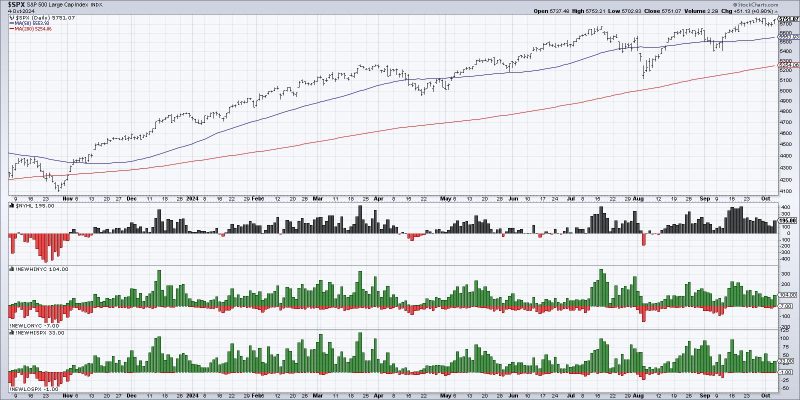The concept of market breadth is an important indicator in the realm of financial analysis, providing insight into the overall health and direction of a market. Market breadth refers to the number of individual stocks participating in a market advance or decline. When a market is said to have good breadth, it means that a large number of stocks are participating in the movement, indicating broad market strength. On the other hand, bad market breadth suggests that only a limited number of stocks are driving the market’s movements, which can be a warning sign for traders and investors.
One key metric used to gauge market breadth is the advance-decline line. This indicator tracks the number of advancing stocks versus declining stocks in a given market. A rising advance-decline line indicates broad participation in an uptrend, signaling a healthy market environment. Conversely, a declining advance-decline line suggests that only a small group of stocks are leading the market higher, which may not be sustainable in the long run.
An important aspect to consider when analyzing market breadth is the sector composition of the market. Different sectors within the market can exhibit varying levels of strength or weakness at any given time. For instance, if only a few sectors are driving market gains while others lag behind, it may indicate a lack of breadth in the market rally. Diversified sector participation is typically a positive sign for market breadth, reflecting a more sustainable and resilient market environment.
Another factor to take into account when evaluating market breadth is the trading volume of individual stocks. Strong market breadth is often accompanied by increased trading volume across a wide range of stocks, showcasing active participation from investors. On the contrary, low trading volume in conjunction with market gains could imply that only a handful of stocks are fueling the upward movement, raising concerns about the breadth of the market rally.
Market breadth analysis can provide valuable insights for traders and investors to make informed decisions in the stock market. By monitoring the participation of individual stocks, sectors, and trading volume, market participants can assess the overall health of the market and identify potential opportunities or risks. A market with good breadth is typically more sustainable and less prone to sharp corrections, while bad breadth may indicate a fragility in the market rally that warrants caution.
In conclusion, market breadth is an essential factor to consider when evaluating the strength and sustainability of a market trend. By examining metrics such as the advance-decline line, sector participation, and trading volume, market participants can gain a better understanding of the breadth of market movements. Keeping a close eye on market breadth can help traders and investors navigate the complexities of the stock market and make well-informed decisions to achieve their financial goals.
